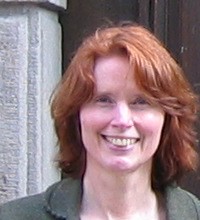Cooking experiments
1. Interacting with others
After reviewing the assignment - we started with cooking through talking to others.
In groups you had a discussion focused on :
- how do you write
- what strengths and challenges arise from this process?
- reflections on what you might change
You then wrote a one-sentence summary to describe your writing process. Some summaries included:
- Straight forward = sit down and write in one stretch
- Process differs by feelings
- For material uninterested = straight forward BUT for material deeply interested in = much more preparation and thinking
- Organic = spur of the moment => can’t pre-write, it either comes out or it doesn’t honest/ from the heart – but unorganized = freewrwite with fix later
- Detail oriented – can help to make effective texture – but can lose focus
- Strategic = planning + thinking = go back to story – can do too much (lose rawness) or too little
- Consciously aware of audience
2. . Exploration of conflicts:You used your one sentence description of how you write and then thoughtabout times when you wrote differently, or when your experience of success was related to a different writing process, or when your parts of your process both were and were not the way you said they were. . .look for writing practices you actually use that do NOT fit into your general characterization.
For example, in my one-sentence description I had described myself as an "unconscious" writer where I have to trust that my meaning will be there - yet at so many points in my process I actively & consciously analyze my writing (through reverse outlines) or use model texts as templates for how to present meanings, or
3. Moving between working ideas and working in words. In our discussion of "spring break" we noticed how moving back and forth among different ways to "say" what we felt about spring break - we moved toward an opening statement that "spring break should be sooner" to a statement that spring break for universities should all be at the same time because. . . " It took a number of statements - back and forth to get there - and new "ideas" were introduced with each new way of "saying" what we meant.
4. Exploring metaphors. As Brigit was talking about moving back & forth between ideas and words - she mentioned that she had come up with a list of metaphors for what she did when she wrote. Her metaphoric positions to write from - along with metaphors from some of the rest of us in the class included:
- a philosopher
- a chemical engineer
- a war/writing strategist
- a mother
- a ship on the ocean
- a musician
- an artist (painter)
Each of these metaphors for writing identities suggests different ways to thinking and acting -as well as different relatinships to writing. They open up ideas that you can then look for conflicts and connections that reflect what you actually do when you write. They are ways to help you define your process in more detail - and to distinguish your process from other general approaches. This sets you up to present both a more nuanced description of how you actually write, and therefore puts you in a better position to think about strengths and weaknesses, and what (and how)you want to change.
5 Switching up perspective or mode;
In teaching writing - patterns for writiing are sometimes defined in terms of mode. These modes are generally identified as: narrative, persuasive, expolition, definition, slassification, description, analysis.
Each mode emphasizes particular forms, particular language choices, & certain kinds of focus & voice. For example, we identified "once upon a time" and "he said. . ." and "and then . . ." and "then they lived happlily ever after" as some of the kinds of language moves (even if these are not the specific words) associated with narrative. For persuasive writing, you identified words & phrases like therefore, because, this shows that, andand it is proved, and we pointed out that most persuasive writing has a thesis statement - whereas stories definitely don't.
Switching your writing from one mode to another help writers see their ideas differently, and it can help them write (for example, if you have trouble writing persuasive essays - try it first as a story). Elbow points out the switching perspective in terms of subject position (from I to we, or third person onmniscient to second person) or other features can also open up new information and relationships.
So - you have spent some time with Elbow, and you will have these strategies as resources - if you even get stuck or need a way to dig something out of what you have written that you feel is there - but you have not yet been able to say directly. I know this wasn't the most favorite class for some of you - so thank you for your patience, and I am looking forward to see what comes up in your process narratives.
For next week.
Read: Wendy Bishop’s “Revising Out and Revising In.” Hans Ostrom’s “The Masks of Revision.” (posted in the course library
Write:
- Post your brainstorming notes from work in class today - and any other brainstorming you have done to your portfolio (create a new page (7. Process narrative, as in the sample portfolio).
- Complete your first draft for the process narrative and 1) post it at your course portfolio; and 2) send it to me.
Thanks for the good class and see you next week.

No comments:
Post a Comment